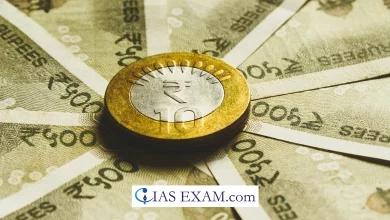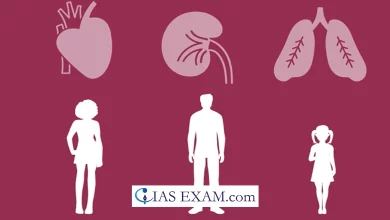Daily Current Affairs for UPSC
Maritime India Vision (MIV)-2030
Syllabus- Government Policies and Interventions [Gs Paper-2]
Context- Recently the Ministry of Ports, Shipping, and Waterways has released the “Maritime India Vision (MIV)-2030” to increase inland transport’s share.
Key Highlights
- Port infrastructure, logistics efficiency, technology, policy framework, shipbuilding, coastal shipping, inland waterways, cruise tourism, marine ecosystem, and maritime security are among the 150 initiatives in the vision’s ten themes.
- The IWT mode should be promoted because it has lower operating costs, uses less fuel, is less polluting, and is better for the environment than other modes.
Maritime sector of India
- India’s maritime industry is significant, with more than 200 non-major ports along its 7500-kilometer coastline and a vast network of navigable waterways.
- With maritime transport accounting for 95% of the country’s trade volume and 65% of its trade value, the country’s maritime sector is crucial to its overall trade and growth.
- India’s two container ports, JNPT and Mundra, are among the top 40 worldwide, and the nation is ranked 21st in shipbuilding and 2nd in ship recycling.
- Over the course of the past five years, cargo volumes have increased by 19% year-over-year and the country’s modal share of cargo has increased from 0.5 percent to 2 percent.
- Inland Water Transport is the most efficient method of transportation, particularly for mass freight like coal, iron mineral, concrete, food grains and compost.
Efforts to increase traffic on the National Waterways
- Fairway development works
-
-
- In the Haldia-Barh, Barh-Ghazipur, and Ghazipur-Varanasi stretches of the NW-1, fairway development works to ensure Least Available Depth (LAD) of 3.0 meters, 2.5 meters, and 2.2 meters, respectively.
- These are moving forward as part of the Jal Marg Vikas Project (JMVP), which IWAI started with technical and financial help from the World Bank.
-
- Construction of Brand-New National Waterways:
-
-
- Through techno-economic feasibility studies, IWAI has identified 25 new NWs for the implementation of technical interventions to make the waterways navigable for transportation purposes.
- When prepared, these new streams will give a substitute method of transportation in separate topographies.
- The Ro-Ro and Ro-Pax service began on a number of national waterways:
- The operation of Ro-Ro and Ro-Pax vessels in Neamati, Kamalabari (Majuli), Guwahati, and North Guwahati, as well as on Bolghaty and Wellingdon Island.
-
- Levy Revision and Fee Collection:
-
-
- The initial three-year waiver of waterway user fees has been considered by the Ministry of Ports, Shipping, and Waterways.
-
- Easy-to-Use Digital Solutions for Business:
-
- The CAR-D (Cargo Data) Portal is a web-based portal for National Waterways’ cargo and cruise movement data collection, analysis, and dissemination to stakeholders.
Obstacles faced by India’s maritime sector
- Inadequate facilities: India’s maritime infrastructure, including ports and inland waterways, is inadequate and requires significant investment and development, despite the country’s extensive coastline and waterways.
- Connectivity issues: Inefficiencies and higher costs result from a lack of connectivity between ports as well as between ports and the hinterland.
- Obstacles to regulation: The oceanic area in India is dependent upon perplexing and divided guidelines, which can make it trying for organizations to proficiently work.
- Unmet needs: In the maritime industry, professionals such as engineers, seafarers, and others are in short supply.
- Concerns about the environment: There are concerns regarding issues such as oil spills, pollution, and the impact of climate change because the maritime sector can have a significant impact on the environment.
- Problems with security: Piracy and terrorism pose additional security risks to the maritime industry.
Way Ahead
- Maritime transportation will receive a significant boost as a result of the development work under Jal Marg Vikas Project-II (Arth Ganga), which is based on the principles of the sustainable development model to energize economic activities. 1 (Ganga River).
- The government should also work to define initiatives, encourage innovation, develop a time-bound action plan, conduct benchmarking, focus on human resources and capability building, and investigate concepts for achieving “Waste to Wealth.”
- In addition to addressing the marine ecosystem and maritime security, the proposed vision will significantly improve infrastructure, develop world-class mega ports, create a transshipment hub in Southern India, and increase brownfield capacity.





.png)



